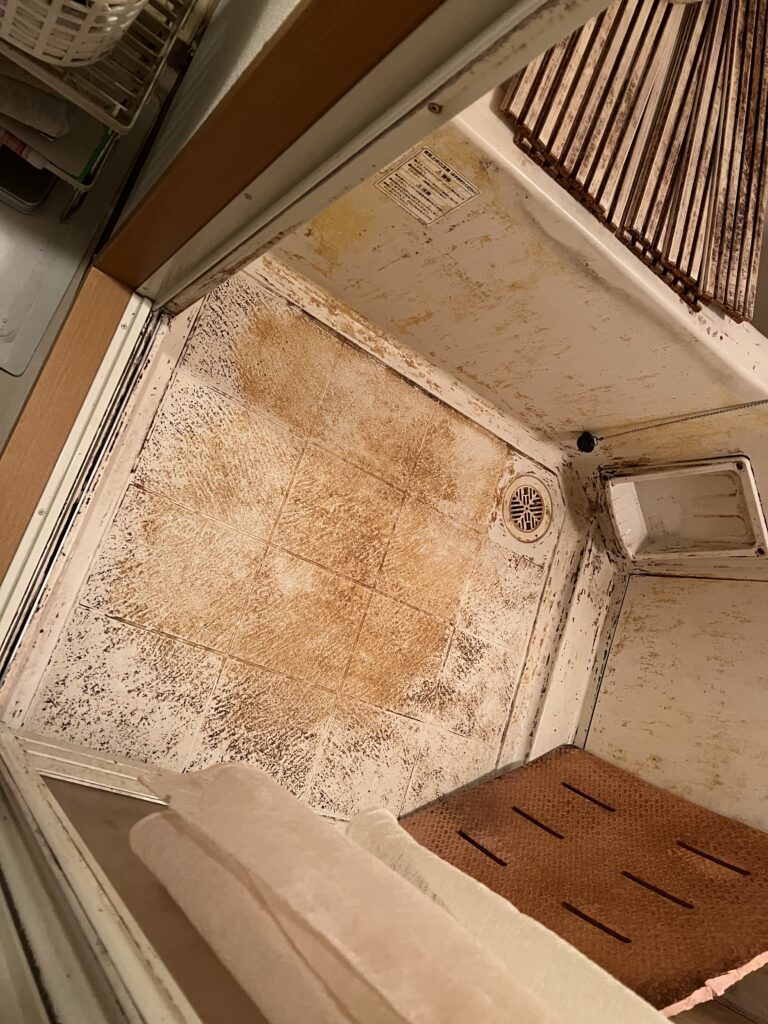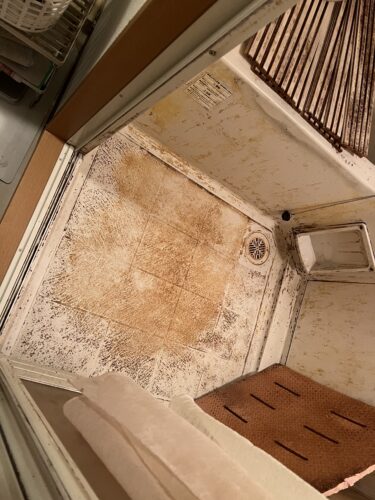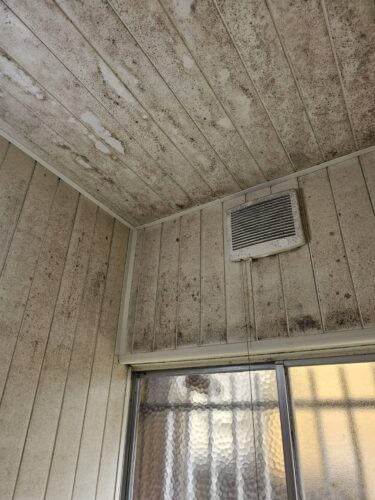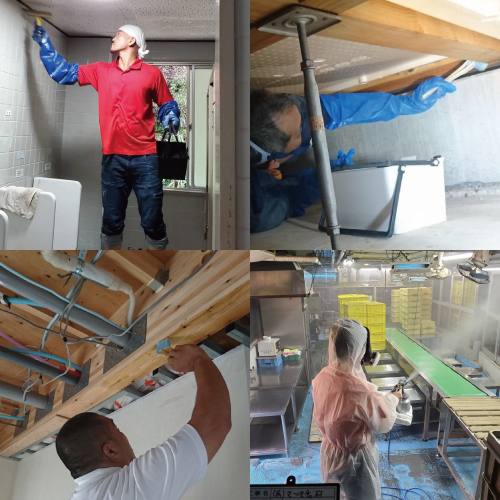Problem Statement
In highly insulated houses and old houses, mold tends to progress in spaces that are not normally visible, such as under floors, behind ceilings, and inside walls, and there is a risk of causing house odors and structural deterioration. Still, are you overlooking the fact that you can’t see it and therefore don’t worry about it?
What you will learn by reading the article
This article provides a clear and detailed explanation of the mechanisms of moisture and mold in each space, how to perform self-checks, and the necessary inspections and countermeasures.
Benefits of reading the article
You will learn specific self-check procedures and professional inspection and removal methods, so you can prevent the risk of odors and structural deterioration caused by mold and regain a safe and comfortable living environment.
1. Why a mold inspection of the subfloor is necessary
The subfloor is an environment that is prone to mold growth due to poor ventilation and the accumulation of moisture. Especially in highly insulated houses and old houses, moisture can easily accumulate due to the high level of insulation and structural sealing. Because they are invisible to the eye, regular inspections are necessary because mold can grow unnoticed and have a negative impact on health and the life of the house.
*1-1. Underfloor Moisture Risk Increases in Highly Insulated Homes
Highly insulated homes are airtight to increase heating and cooling efficiency. As a result, ventilation to the outside air is restricted, and moisture tends to accumulate under the floor. Especially during the rainy season and winter, when condensation is common, it is difficult to keep dry and becomes a breeding ground for mold. If mold grows inside the insulation or on the wood, there is a risk of progressive corrosion of building materials.
*1-2. Invisible Mold Damage in Old Houses
Even though old houses are built using traditional construction methods and have vents and underfloor space, mold can easily grow under the floor due to deterioration and moisture accumulation over the years. In particular, if there is inadequate damp-proofing to block moisture from the ground, or if rainwater infiltrates, the underfloor environment can quickly deteriorate. Because the damage occurs in places that cannot be seen, regular inspections and countermeasures are important.
2. Mold Damage and Condensation Mechanisms in Ceilings
Since there are many parts of the ceiling in contact with the outside air and the temperature difference between the ceiling and the interior is large, the ceiling environment is prone to condensation. Moisture condensation is absorbed by the wood and insulation, causing mold to grow. Mold in the ceiling not only corrodes the structural materials of the building, but also causes a musty odor to the room.
*2-1. What is internal condensation caused by differences in outside and room temperatures
In winter, when warm indoor air moves to the ceiling and comes into contact with cold outside air, water droplets form. This is “internal condensation. This condensation water soaks into the insulation and wood, creating an environment that is difficult to dry. Especially in inadequately ventilated ceilings, condensation water continues to occur repeatedly, accelerating the generation of mold.
*2-2. Chain of Wood Corrosion and Mold Caused by Condensation
Prolonged exposure to a moist environment makes wood susceptible to corrosion. This reduces the durability of the house and can cause serious damage to the building structure. In addition, corroded wood is a perfect breeding ground for mold, which leads to a vicious cycle of condensation, mold, corrosion, and more mold.
3. odor and discoloration problems of mold in closets
Closets have poor air flow and are prone to moisture buildup. This leads to a high incidence of mold, which can lead to a distinctive musty smell and stains and discoloration on clothing and wallpaper. If regular ventilation and dehumidification measures are inadequate, the damage can spread.
*3-1. Rising humidity in enclosed spaces and sources of musty odors
Since closets are sealed with doors, air flow is poor and humidity can easily become trapped. In particular, when damp clothes and bedding are stored, this causes the humidity inside to rise quickly, making it easy for mold to grow. When mold grows, an unpleasant odor will be trapped inside, and in some cases it cannot be removed even if the clothes are washed.
*3-2. Yellowing and stains on clothing and wallpaper caused by mold
When mold grows in a closet, brown or black stains may appear on clothing and wallpaper. These stains are evidence that mold spores have attached themselves to fibers and surfaces and have taken root and grown. Since they are unsightly and can cause health problems, it is important to remove them as soon as you find them and take measures to prevent their recurrence.
4. Structural Deterioration Caused by Mold Inside Walls
Mold that forms inside walls tends to be detected late because it is invisible. However, if left unchecked, it can damage structural and insulation materials, significantly reducing the overall durability of the house. In particular, mold caused by water leakage or condensation can cause extensive damage.
*4-1. Risk of Spread and Deterioration to Substrate and Insulation Materials
Mold that forms within walls can seep into the substrate and insulation materials, deteriorating the materials themselves. In particular, materials that easily contain moisture tend to become a breeding ground for mold, and the strength of the building material is compromised. Insulation effectiveness is also reduced, which may affect the energy-saving performance of the house.
*4-2. Hazardous areas for mold concentrated around plumbing
The areas around plumbing in walls are prone to condensation and concentration of mold. In particular, pipes in bathrooms and kitchens tend to be humid, and if there is a water leak, mold can spread at once. Since it is difficult to visually check these areas, a professional survey is effective.
5. Methods and points of mold inspection
To find mold, it is important to not only visually check, but also smell, sense moisture, and if necessary, have a professional agency inspect. The first step to the correct response is to check the inside of the structure, not just the visible area.
*5-1. How to initially check by sight and smell
First, check for mold smells and for blackened or stained walls, ceilings, and subfloors. Be especially careful where there is a sour smell characteristic of mold. In addition, it is important to inspect areas that feel humid and spaces that feel poorly ventilated intensively.
*5-2. Importance of Sampling Inspection by a Professional Agency
There are many cases where visual inspection and sense of smell alone are not enough to make a judgment. In such cases, it is effective to request a sampling inspection by a specialized agency. By measuring the amount of mold spores in the air or by examining a specific wall or part of a floor, it is possible to accurately determine the extent of mold spreading inside.
6. Best Practices for Mold Control and Prevention
To prevent mold growth, it is important to be aware of humidity control and ventilation on a daily basis. In addition, consideration should be given to the insulation performance and waterproofing treatment of the building itself to minimize the risk.
*6-1. Daily care through ventilation and temperature/humidity control
Regular ventilation is the basis of mold prevention. Especially during the humid rainy season and in winter when the room is closed, the use of a dehumidifier or ventilation fan is effective. Also, utilize a hygrometer to keep indoor humidity at 40-60%.
*6-2. Reinforced Insulation and Waterproofing Recommended by Professionals
Reinforcing insulation and waterproofing exterior walls and roofs are important to reduce condensation, which is a source of mold. Incorporating regular inspections and repairs by a professional contractor will be effective in preventing mold over the long term. 7.
7. Introducing Professional Methods of Mold Removal
Once mold is discovered, it is important to understand the difference between self-treatment and professional removal methods. If not treated correctly, the risk of recurrence increases. Especially for mold that has taken root deeply, professional techniques are required.
*7-1. Simple do-it-yourself removal procedures
If the mold is mild, you can wipe it off using a commercially available disinfectant spray or rubbing alcohol. However, if the mold has deep roots or has penetrated into the material, simply removing the surface is not sufficient and the mold may quickly reappear.
*7-2. Effects of Mold Busters’ MIST Method®
The MIST Method® is Mold Busters’ proprietary technology that decomposes and kills mold without rubbing. Mold can be uprooted and removed without damaging the material, and the risk of reoccurrence is greatly reduced by the use of a special anti-mold treatment. This is a safe and highly reliable method for households with small children and the elderly.
For mold removal and remodeling, contact Mold Busters Osaka / Mold Remodeling Tokyo & Nagoya
The risk of mold lurking in unseen places such as under floors, in ceilings, and in walls is a very serious problem that not only shortens the life of buildings but also adversely affects the health of their occupants. Mold Busters Osaka and Mold Remodeling Tokyo & Nagoya can solve such mold problems from the root.
These services are operated by Taikoh Kenso Co., Ltd. and their greatest strength is that they offer remodeling and mold removal in a single package. For example, there is no need to hire a separate contractor for repair work, insulation repair, or waterproofing that occurs after mold removal. Taikoh Kenso is a one-stop shop for inspection, removal, repair, and prevention.
In particular, the “MIST Method®” used for mold removal is a proprietary technology that decomposes and kills mold without damaging the material. It is also gentle to the human body and the environment, and is widely used in nursery schools, hospitals, and facilities for the elderly, where safety is essential. Furthermore, the “anti-mold treatment,” which is the finishing touch to the MIST method, is fast-acting, long-lasting, and highly safe, greatly reducing the risk of reoccurrence.
In addition, the remodeling business of Taikoh Kenso Co., Ltd. covers a wide range of construction work, from painting the exterior walls and roofs of houses, to interior cloth and floor replacement, and remodeling of bathrooms, kitchens, and other water-related areas. We have a large number of construction achievements to date, and our integrated support from design to construction ensures both quality and peace of mind. In particular, by simultaneously implementing mold remediation and renovation, it is possible to improve the performance of your home and prevent future problems.
If you want to keep your current home more comfortable and safe, or if you are concerned about mold but also want to remodel, please feel free to contact us at Mold Busters Osaka or Mold Remodeling Tokyo & Nagoya. We will improve your home from the root with our reliable technology and experience.





